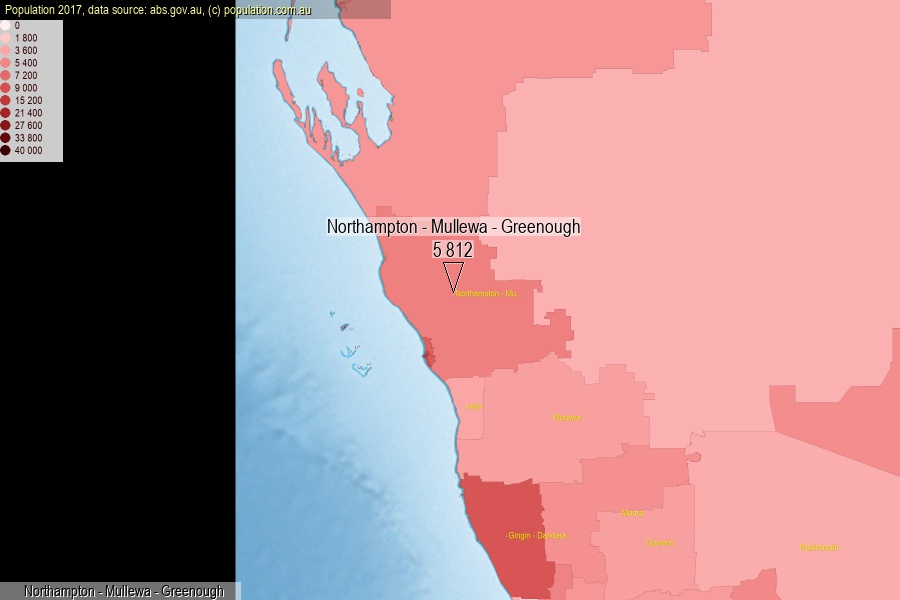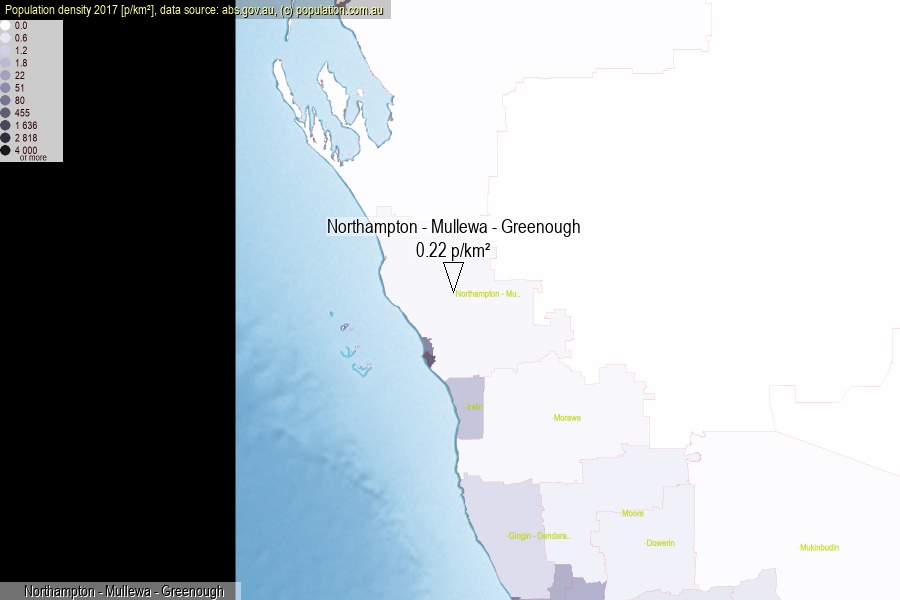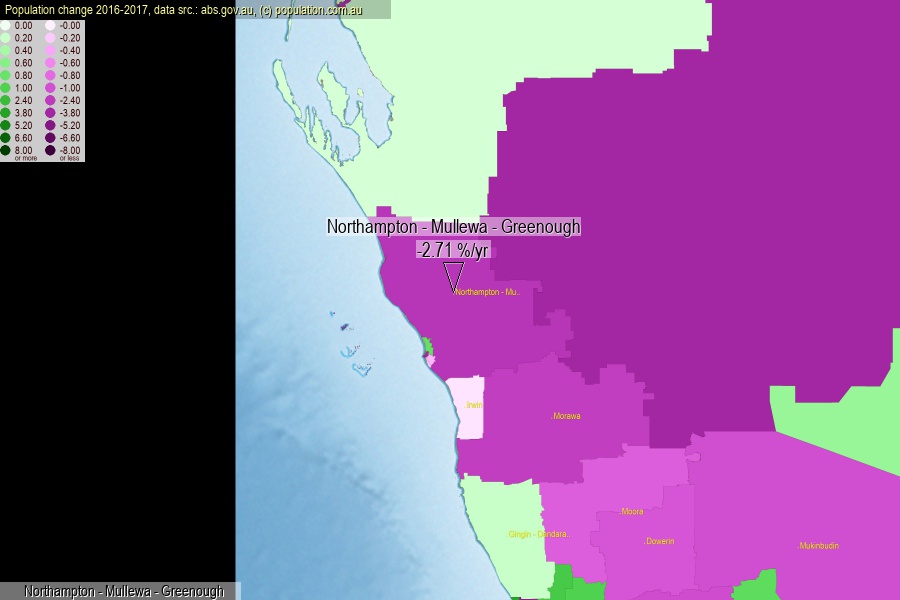 population.com.au
population.com.auLast official estimated population of Northampton - Mullewa - Greenough (as Statistical Area Level 2) was 5 812 people (on 2017-06-30)[2]. This was 0.02% of total Australian population and 0.224% of WA population. Area of Northampton - Mullewa - Greenough is 26 161.90 km², in this year population density was 0.22 p/km² . If population growth rate would be same as in period 2016-2017 (-2.71%/yr), Northampton - Mullewa - Greenough population in 2025 would be 4 665. [0]



Click to enlarge. Northampton - Mullewa - Greenough is located in the center of the images.
Population [people], population density [p./km²] and population change [%/year] [2]
View borders » (new window) [4]
[2001-2002] 0.00 %/Yr.
[2002-2003] +0.07 %/Yr.
[2003-2004] -0.20 %/Yr.
[2004-2005] -0.92 %/Yr.
[2005-2006] +1.01 %/Yr.
[2006-2007] -2.22 %/Yr.
[2007-2008] +1.34 %/Yr.
[2008-2009] -0.15 %/Yr.
[2009-2010] -1.17 %/Yr.
[2010-2011] -0.80 %/Yr.
[2011-2012] +2.46 %/Yr.
[2012-2013] +1.66 %/Yr.
[2013-2014] -1.49 %/Yr.
[2014-2015] -1.10 %/Yr.
[2015-2016] -0.81 %/Yr.
[2016-2017] -2.71 %/Yr.
[0] Calculated with linear interpolation from officially estimated population
[1] Read more about SA2 and Australian Statistical Geography Standard (ASGS) on abs.gov.au
[2] Population data from Australian Bureau of Statistics (Population and density: 2017; change: 2016-2017)
[3] Digital Boundaries: Australian Statistical Geography Standard (ASGS) 2016.
[4] Border coordinates are simplifyed using Ramer-Douglas-Peucker algorithm.